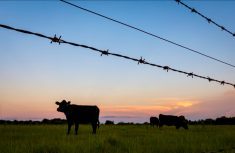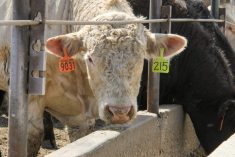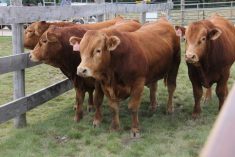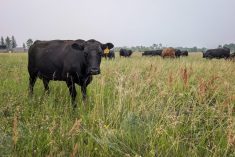Demand for farm equipment should remain high through 2023 despite higher interest rates and projected price increases, according to Farm Credit Canada.
The federal ag lender has released an outlook on the farm equipment market that analyzed data and trends that affect the market.
While the outlook attributes much of the current demand to relatively high commodity prices, combined with strong farm cash receipts, it is also because orders aren’t being filled on schedule as the COVID-era supply chain hangover continues.
FCC’s chief economist, J.P. Gervais, says despite improvements, the industry is still catching up.
Read Also

U.S. livestock: CME cattle tick lower in thin pre-holiday trade
Chicago | Reuters – Chicago Mercantile Exchange live and feeder cattle futures were little changed but ended slightly lower on…
“Inventory is hampered by the supply chain disruptions we saw over the past two years,” he said Tuesday, noting tractor inventory levels are down 42 per cent and combines are down 47 per cent from the five-year average.
In its outlook, FCC said it is likely that inventory will remain low through 2024 as demand remains strong and manufacturers catch up on pre-orders. And in terms of “catch up” it appears the sector isn’t out of the woods.
Strong demand for farm equipment for the rest of 2022 is also expected to reduce inventory levels, which will put upward pressure on prices.
But Gervais said demand won’t be the only thing affecting equipment costs.
“Most new tractors and combines sold in Canada are manufactured south of the border, so an expected depreciation of the loonie through 2023 should lead to price increases on farm machinery,” he said. Domestically manufactured farm equipment would be less affected by a weakening Canadian dollar.
While demand for equipment will remain high, sales projections are mixed. Higher horsepower tractor, combine, and implement sales are expected to see year-over-year growth, but lower horsepower tractor sales, which are more closely tied to the economy, are expected to decline in 2022 because of slowing economic growth.
John Schmeiser, president of the North American Equipment Dealers Association-Canada, said that’s how it is playing out in the marketplace.
“I’m getting some input from our equipment dealers about their pre-sale period,” he says. That is when dealers take orders for delivery in the following year. According to Schmeiser, things look good so far.
“We’re seeing a lot of robust activity in the market for a variety of reasons.”
There’s no magic to understanding those reasons, he adds. Buying patterns come down to three factors: weather, commodity prices and interest rates.
“If the weather co-operates, we’re going to have a crop in the field,” he says. “If there’s a crop in the field, obviously customers are going to reinvest in their equipment.”
But he also notes that even with a good crop, poor commodity prices leave less in farmers’ coffers and that could result in postponed equipment upgrades.
In terms of interest rates, Schmeiser says farmers have cash on hand, which helps offset higher rates. And while rates have been edging up recently, they’re not at the crisis level of the late 1970s and early ’80s when consumer lending rates were as high as 20 per cent.
Nevertheless, he acknowledged rising interest rates are a growing concern with customers.
“It’s not a factor that we really had to look at very much recently, but I know our customers are watching as interest rates start to creep up.”
On Oct. 26, the Bank of Canada announced a 50 basis point increase in its key rate to 3.75 per cent. It followed on the heels of a 75 basis point increase in September and a 100 point increase in July. The October increase was the sixth consecutive increase since March.
The Bank of Canada is committed to lowering the inflation rate to two per cent, which it predicts will take at least until the end of 2024. So, more increases are likely.
With high commodity prices and a healthy crop, two of the three factors that influence buying patterns are pretty solid and Schmeiser is not surprised FCC economists have come to the same conclusion.
However, the supply chain crunch continues to vex equipment dealers. Though it may be improving, there is still significant catching up to do.
“The good news on that front is with parts availability,” Schmeiser said. “When the pandemic started in March of 2020, the first impact that we saw was on parts availability. Although it’s not where it needs to be, the manufacturers are telling us that their fill rates are improving month over month. So, the worst of that is behind us.”
But recovery is lagging in terms of new equipment, he said.
“The manufacturers are telling our dealers that they’re having issues with their providers, their vendors and their suppliers. Whether that’s raw materials or its components, all of those things have been problematic. Everyone is in the same boat here.
“We’re not forecasting that we’ll return to pre-COVID conditions until the fourth quarter of 2023 as a best-case scenario,” he said. “And with that comes uncertainty in terms of delivery times.”
Schmeiser’s estimate tracks with FCC opinions.
“Inventory levels for farm equipment remain below pre-pandemic levels, something we expect could continue through 2024,” Gervais said.
— Don Norman is a reporter for the Manitoba Co-operator in Winnipeg.















